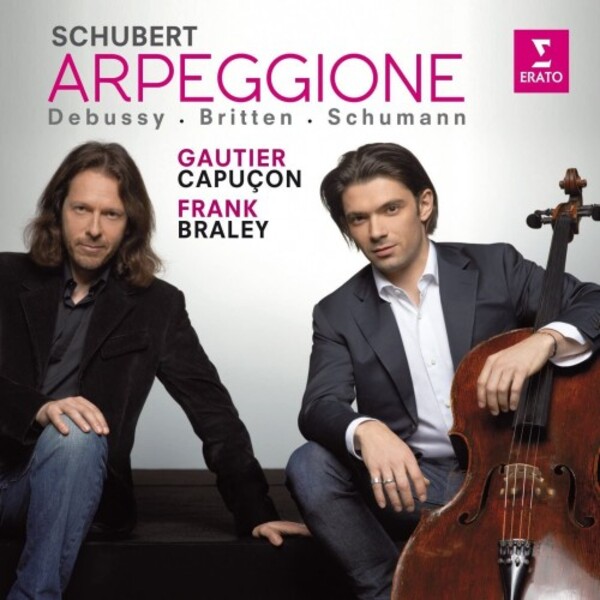
Schubert - Arpeggione / Works by Debussy, Britten & Schumann
£13.25
Usually available for despatch within 5-8 working days
Despatch Information
This despatch estimate is based on information from both our own stock and the UK supplier's stock.
If ordering multiple items, we will aim to send everything together so the longest despatch estimate will apply to the complete order.
If you would rather receive certain items more quickly, please place them on a separate order.
If any unexpected delays occur, we will keep you informed of progress via email and not allow other items on the order to be held up.
If you would prefer to receive everything together regardless of any delay, please let us know via email.
Pre-orders will be despatched as close as possible to the release date.
Label: Erato
Cat No: 9341582
Format: CD
Number of Discs: 1
Genre: Chamber
Release Date: 4th November 2013
Contents
Works
Cello Sonata in C major, op.65Cello Sonata in D minor, L135
Sonata in A minor, D821 'Arpeggione'
Stucke (5) im Volkston, op.102
Artists
Gautier Capuçon (cello)Frank Braley (piano)
Works
Cello Sonata in C major, op.65Cello Sonata in D minor, L135
Sonata in A minor, D821 'Arpeggione'
Stucke (5) im Volkston, op.102
Artists
Gautier Capuçon (cello)Frank Braley (piano)
About
This collection of works for cello and piano, with Schubert’s Arpeggione Sonata as its centrepiece, sees Gautier Capuçon and Frank Braley paying tribute to two towering musicians of the 20th century - Mstislav Rostropovich and Benjamin Britten, who recorded all four of the works on the programme: Schubert’s ‘Arpeggione’ Sonata, Debussy’s Cello Sonata, Schumann’s Fünf Stücke im Volkston and Britten’s own Cello Sonata in five movements, which received its first performance at the Aldeburgh Festival in 1961, two years after composer and cellist had first met. “It is a magnificent piece,” says Gautier Capuçon of the Britten, “and too rarely played as far as I’m concerned. I grew up with Britten’s children’s opera The Little Sweep, so I am well acquainted with his language.”
Schubert wrote the Arpeggione Sonata – conceived for the eponymous six-stringed fretted instrument, but now standard repertoire for cello – in 1824, when he was already desperately ill and suffering from crushing bouts of depression. “It is a work that has always profoundly touched and moved me”, says Capuçon, “There is such greatness of feeling in it, even though Schubert was in the depths of despair. As Beethoven is reputed to have said: ‘Truly, in Schubert there dwells a divine spark!’
Debussy’s Cello Sonata was also written at a dark time, in 1915, the second year of the First World War, when the composer was already ill with the cancer that was to kill him in 1918; yet it is a work of both sober elegance and mercurial fantasy from this archetypal musicien français – the words with which Debussy signed the score.
Schumann’s Fünf Stücke im Volkston (Five Pieces in the Popular Style) were written in 1849, a productive time for the composer, even though he, too, was suffering from ill health – signs of the mental disturbances that were to lead to a suicide attempt five years later. Again, these are not dark works, but lyrical and accessible.
Error on this page? Let us know here
Need more information on this product? Click here